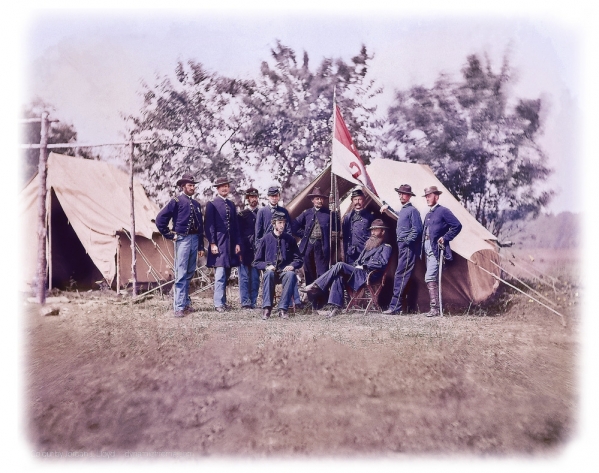|
Civil War History Film Clips  A moving account of the fall of Richmond, pieced together from various eyewitness accounts:
"The whole Rebel Government was on the move, and all Richmond desired to be. No thoughts of taking Washington now, or of the flag of the Confederacy flaunting in the breeze over the old capitol! Hundreds of officials were at the depot, to get away from the doomed city. Public documents, the archives of the Confederacy, were hastily gathered up, tumbled into boxes and barrels, and taken to the trains, or carried into the streets and set on fire." The Atlantic Monthly who witnessed Grant's maneuvering outside the city of Richmond filed this article: "General Grant's entire force could not have been less than a hundred and thirty thousand, including Sheridan's cavalry, the force at City Point, and the provisional brigade at Fort Powhatan. Lee's whole force was not far from seventy thousand, - or seventy-five thousand, including the militia of Richmond and Petersburg..."
Click here to learn why Richmond was chosen as the capitol of the Confederacy Confederate General Robert E. Lee (1807 - 1870) is the topic of this "psycho-graphic" essay from Confederate Portraits (1914) by the celebrated biographer, Gamaliel Bradford (1863 - 1932).
"...Lee won the hearts of his soldiers by living as they did. He managed the business of his position with as little fuss and parade as possible. Foreign officers were struck with the absolute simplicity of his arrangements. There were no guards or sentries around his headquarters, no idle aids-de-camp loitering about..." This article from 1897 is a digest of "Cheerful Yesterdays", a longer piece by Colonel Thomas Wentworth Higginson (1823 – 1911) originally appeared in The Atlantic Monthly. Having served actively in the anti-slavery movement during the days leading up to the Civil War, Higginson put to paper his memories of famed abolitionist John Brown, wishing to banish all thoughts that the man was mad.
A 1910 book review of Oswald Garrison Villard's biography of John Brown (1800 - 1859). Believed to be one of the more honest biographies on Brown, Villard's effort is said to have five chapters dealing only with Brown's activities in "Bloody Kansas", including the slaughter at Pottawatomie.
For many it will come as no surprise that the Confederate States of America entered it's twilight with the same hubris and cupidity that gave it life. This 1912 article solved a mystery: what had become of the gold and silver from the vaults of the CSA when it finally became clear to all that the rebellion was over.
Click here to read a memoir of the Union victory parade in 1865 Washington. |
MORE ARTICLES >>> PAGE: * 1 * 2 * 3 * 4 * 5 * 6 * 7 * 8 * 9 * > NEXT |
Unable to open RSS Feed Civil War History Articles, exiting
|